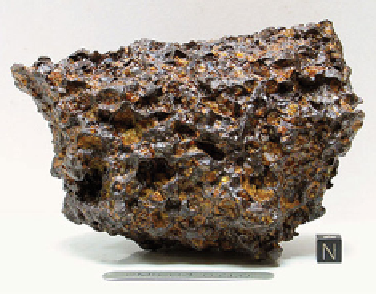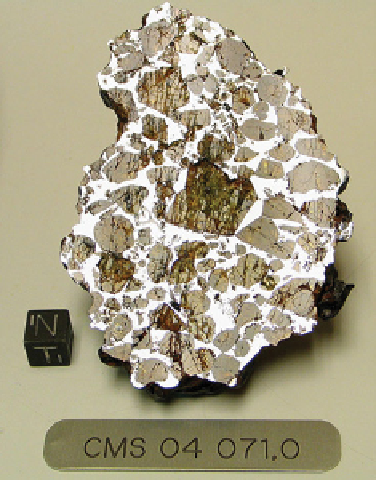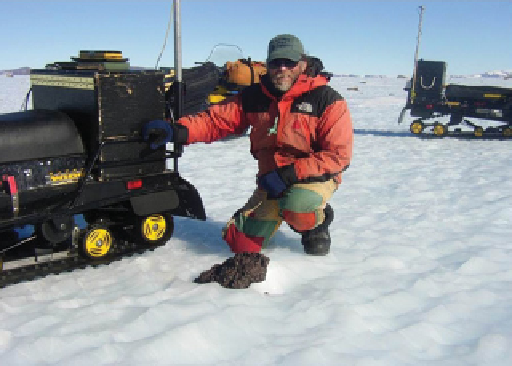Geology Reference
In-Depth Information
Main group pallasite
2110.1 g
Found December 20, 2004
13.0 × 9.0 × 8.0 cm
Weathering = B/C
Pallasites are perhaps the most striking of all meteorites. Composed of
approximately half metal and half large (up to 3 cm) olivine crystals,
pallasites are generally thought to be from near the core-mantle interface
in a small asteroid. other phases such as pyroxene, phosphate, chromite,
phosphide, and sulfide, as well as textural varieties with angular and
rounded olivine, give the pallasites some diversity as a group. it is thought
they may represent as many as 10 different parent bodies, and are not
associated with another major meteorite group, except for possibly the
iiiAB irons with which they share a similar bulk metal composition. Some
pallasites are thought to be formed by impact processes.
Plate 77
MiNERALogy
SigNiFiCANCE
CMS 04071 exhibits fragmental, angular olivine (Fa
12
)
grains ranging in size from a hundred microns to 2 cm.
interstitial to these grains are euhedral and irregular
chromites, as well as troilite and schreibersite. The texture,
mineralogy, and even degree of weathering of CMS 04071
are reminiscent of imilac.
CMS 04071 is paired with CMS 04061-04079, one of 18
paired masses, comprising a total of 170.55 kg in recovered
mass. Although there have been other pallasites discovered
in Antarctica (Thiel Mountains, Queen Alexandra Range
[QUE] 93544, Pecora Escarpment [PCA] 91004, yamato
8451 and 74044), the CMS pairing group constitutes the
largest pallasite recovered from Antarctica.
References [815]




